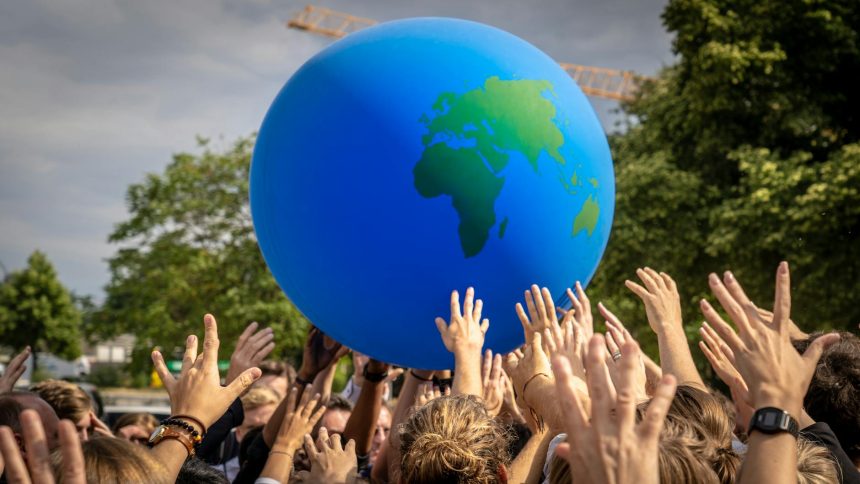Public Art Projects: 7 Ways They Revitalize Cities & Inspire Communities
Have you ever walked through an urban center and felt an undeniable shift in atmosphere, a vibrant energy that wasn’t there before? Often, this profound transformation is orchestrated by innovative public art projects. These aren’t just decorative additions; they are powerful catalysts for change, breathing new life into forgotten spaces and fostering a deeper connection among residents.
From towering sculptures to intricate murals, public art redefines our shared environments. It challenges perceptions, sparks dialogue, and ultimately shapes the identity of a city. Let’s delve into how these creative initiatives are fundamentally reshaping our urban landscapes.
The Transformative Power of Public Art Projects in Urban Spaces
Public art projects extend far beyond mere aesthetics. They serve as vital components of urban development, driving social, economic, and cultural revitalization. By integrating art into the fabric of daily life, cities create more engaging, livable, and memorable places for everyone.
These initiatives can turn neglected areas into vibrant hubs, attracting both locals and tourists. The strategic placement of a captivating installation can redirect foot traffic, encourage exploration, and even reduce crime rates by increasing communal ownership of public spaces. It’s about crafting an experience, not just installing an object.
Fostering Community Bonds Through Creative Placemaking
One of the most significant impacts of urban art is its ability to build and strengthen community. When residents engage with art in their everyday environment, it creates a shared experience and a sense of collective identity. Creative placemaking, a process that leverages arts and culture to improve a community’s physical and social character, is at the heart of this.
Art installations often become focal points for local gatherings, festivals, and educational programs. This direct engagement encourages dialogue and collaboration, weaving a richer social tapestry. Consider how a community mural can tell a local story, connecting generations and celebrating shared heritage.
- Sparking Dialogue: Art often presents new perspectives, encouraging conversations among diverse groups.
- Enhancing Local Pride: Unique artworks give residents a sense of ownership and pride in their neighborhood.
- Creating Shared Experiences: Public art venues become meeting points and backdrops for community events.
- Celebrating Diversity: Art can reflect the varied cultures and histories present within a city.
Beyond Murals: Diverse Public Art Installations Unlocking City Potential
While murals are a beloved form of urban art, the spectrum of public art projects is incredibly diverse. We see everything from monumental sculptures to interactive digital displays, and even temporary installations that transform spaces for a limited time, creating a sense of urgency and wonder. Each form offers a unique way to engage with the urban environment.
These varied approaches allow artists to experiment with different materials, technologies, and concepts, pushing the boundaries of what public art can be. They can range from permanent fixtures that become iconic landmarks to ephemeral pieces that challenge us to live in the moment.
For more insights into the vast array of American public art, explore resources like the Smithsonian American Art Museum’s Public Art archives.
From Local Initiatives to Global Movements: The Scope of Art Collectives
The scale of public art initiatives can vary dramatically, from a single artist transforming a local wall to global movements orchestrated by influential art collectives. These groups often bring together a diverse range of talents—artists, architects, urban planners, and community organizers—to tackle ambitious projects that span multiple cities or even continents.
Collectives like Nōvo Collective are at the forefront of this movement, demonstrating how coordinated efforts can achieve massive impact. Their work often involves extensive planning, community outreach, and the mobilization of numerous resources to bring large-scale visions to life. This collaborative approach allows for projects that are not only visually stunning but also deeply integrated into the urban fabric.
- Conceptualization: Defining the artistic vision and its relevance to the urban context.
- Community Engagement: Involving local residents and stakeholders in the planning process.
- Logistics and Funding: Securing permits, materials, and financial support for the project.
- Execution: The physical creation and installation of the artwork.
- Impact Assessment: Evaluating the project’s social, cultural, and economic effects on the community.
Measuring the Impact: Economic and Cultural Resurgence via Public Art
The benefits of investing in public art projects are quantifiable in many ways. Economically, they can boost tourism, increase property values in surrounding areas, and create jobs for artists, fabricators, and maintenance staff. Culturally, they enrich the lives of citizens, enhance a city’s brand, and preserve unique local narratives.
Cities that embrace public art often see a ripple effect, attracting creative industries and fostering innovation. The presence of compelling art signals a vibrant, forward-thinking community, making it more appealing for businesses and residents alike. It’s an investment in both the present and future well-being of a city.
Navigating the Canvas: Challenges in Uncommissioned Urban Art
While many public art installations are officially commissioned, a significant portion of urban art emerges as “uncommissioned” work. This form, often associated with street art and graffiti, brings its own set of challenges and triumphs. It can be a powerful expression of dissent, a spontaneous burst of creativity, or a way to reclaim neglected spaces without formal approval.
The debate around uncommissioned art often centers on legality, permanence, and public perception. However, it undeniably contributes to the dynamic, ever-evolving visual landscape of a city, often pushing boundaries and inspiring new forms of expression. Understanding the nuances of urban art initiatives, both commissioned and uncommissioned, is crucial for a holistic view of their impact.
Learn more about the legal and ethical considerations surrounding public art and its preservation at resources like the National Endowment for the Arts.
In conclusion, public art projects are indispensable tools for urban revitalization. They are not merely decorations but powerful engines of community engagement, economic growth, and cultural enrichment. By thoughtfully integrating art into our cities, we create more beautiful, dynamic, and connected places for everyone to thrive.
What public art projects have inspired you? Share your experiences in the comments below and explore local initiatives in your own community!
public-art-projects
Urban public art project city revitalization community engagement







